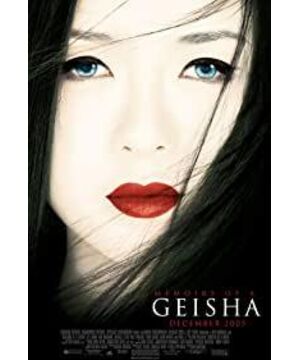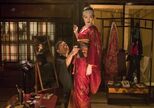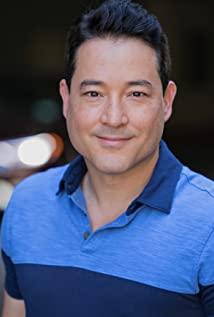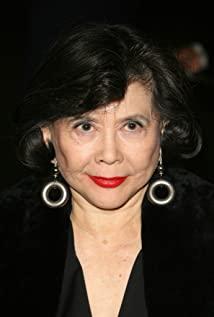Synopsis: The story of Cinderella in Japan takes place in a small fishing village near Kyoto, Japan in 1926. The little girl Nitta Sayuri was born into a poor family. Sayuri inherited the characteristics of her mother - a pair of translucent gray eyes. A different and ordinary color also foretells her equally extraordinary life. For Sayuri, the simple and happy childhood memories are short-lived. Because the family could not make ends meet, Sayuri's mother had to send her to a geisha house to study art, although the life there was hard and boring, and at the same time she had to endure the girls who were studying art at the same time. Squeezed out, but the tough Sayuri still completed all her studies and eventually became the most successful geisha in Japan at that time. With her beauty and versatility, Sayuri has captured almost all the most powerful men, but what she has been unable to let go of is that a man she truly loves will never be able to respond to her infatuation... ----- -------------------------------------------------- --------- ◎Behind the scenes: Sino-US cooperation This film is adapted from the novel of the same name published in 1997. The author Arthur Gordon once studied in China and Japan. During his stay in Japan, he interviewed The geisha Mineko Iwasaki, who was well-known in Japan at the time, recorded up to 100 hours of sound materials. After returning to China, he published this novel about the mysterious industry of geisha on the basis of these materials. The book was once a bestseller in the New York Times. It stayed on the charts for 2 years, sold 4 million copies and was translated into 32 languages. Less than a month after its publication, the novel was discovered by Columbia's keen producers, who bought the rights to the film, raised more than $85 million, and hired Spielberg as the film's director. Producer, 5-time Oscar-winning film scorer John Williams produces music production, and Liza Dalby, the only American recognized by the Japanese geisha industry, serves as a consultant. Rob Marshall is not just a successful film director. Before directing "Chicago," which won 6 Oscars, he made the MTV movie "Annie," which was nominated for 12 Emmy Awards that year. He was once active on Broadway and was nominated for a total of 6 Tony Awards. His versatility is particularly eye-catching in music and art subjects, which is why he was finally favored by Colombia. Robin Swycord, an experienced screenwriter, was tasked with adapting the best-selling novel into a full-fledged screenplay, but for this popular subject, of course, a screenwriter alone could not reassure the production company, so they found it again. Screenwriter Doug Wright polished the script, and he was also asked to stay on set during filming, revising lines at any time so the actors could pronounce them more easily. As for the heroine of the film, Zhang Ziyi was not initially chosen to play the role. Due to the fact that Maggie Cheung and Yoon-jin Kim were not able to reach an agreement, Zhang Ziyi has many years of professional dance training. "As the starring role, was finally invited to become the starring role of this film. The film will also gather many Chinese actors including Gong Li, Michelle Yeoh, etc. At the same time, the Japanese side will have the Oscar-nominated Ken Watanabe to join the show. -------------------------------------------------- -------------- ◎Production Highlights: Geisha Storm Geisha first appeared in Japan at the end of the 17th century, and there are still hundreds of practitioners supporting this ancient and mysterious traditional industry. It is very likely that Japanese geisha were influenced by the Jiaofang performance culture of the Tang and Song dynasties in China, as the two share similar costumes, behavioral norms and performance styles. Several of the main actors of the film are from China, although part of the reason is the popularity problem as explained by the production company, but also part of the reason is that this is a novel and film that has been boycotted in Japan. Although the English version of "Memoirs of a Geisha" was a hit, its Japanese version was boycotted at home because the film distorted the geisha's principle of "playing skills, not showing off" in many ways. The prototype of Sayuri in the book, Iwasaki Mineko, is the richest and most famous geisha in her age. She has been systematically trained as a geisha since she was 5 years old, and later became famous. She has sued the U.S. Department of Justice over the book, suing the author and publishing company for making up geisha to cater to Western curiosity, while Arthur Gordon has argued that the novel is purely fictional, so it cannot be said to be against the industry cause damage. With no hope of winning the case, Mineko Iwasaki published her own memoirs in 2001. This non-fiction version of "Memoirs of a Geisha" sold more than 250,000 copies in Japan and sold well in Europe and the United States. -------------------------------------------------- -------------- ◎Comment: Not History Just like "The Last Samurai", Americans like to choose the history of other countries, and then use their own cultural ideas to package, the original novel has attracted many protests from Japan, because the auction of virginity depicted in this novel, etc. The plot has seriously distorted the real situation of Japanese geisha. Looking back at the entire film, it is rare to find Japanese elements in it. Except for the character identity and background, "Memoirs of a Geisha" has absorbed investment from the United States, and whether it is the production, director, or soundtrack, the work is done by Americans. If it weren't for the different skin tones and limited investment, Colombia might even use purer American casseroles. In the final analysis, this is an American film. Although there are "three Chinese women in one play", the actor's identity does not affect the style and characteristics of the film. The last time Great Americanism let Tom Cruise play the role of the Meiji Restoration. Heroes, this time they seem to be more inclined to show the mysterious industry of Japan before and after World War II. The open infighting between women and Sayuri's love seems to be the center of the whole film. American movies focus on entertainment, so it's hard to imagine them adapting a non-fiction version written by Mineko Iwasaki. For this film, before we see it, we can almost make a bold prediction: this film is by no means the pride of a Chinese film, it just happens to need some cheap and beautiful Chinese faces, and the theme of the film must be conservative - 100 100% is by no means history, only about Fengyue. American movies focus on entertainment, so it's hard to imagine them adapting a non-fiction version written by Mineko Iwasaki. For this film, before we see it, we can almost make a bold prediction: this film is by no means the pride of a Chinese film, it just happens to need some cheap and beautiful Chinese faces, and the theme of the film must be conservative - 100 100% is by no means history, only about Fengyue. American movies focus on entertainment, so it's hard to imagine them adapting a non-fiction version written by Mineko Iwasaki. For this film, before we see it, we can almost make a bold prediction: this film is by no means the pride of a Chinese film, it just happens to need some cheap and beautiful Chinese faces, and the theme of the film must be conservative - 100 100% is by no means history, only about Fengyue.
View more about
Memoirs of a Geisha reviews











